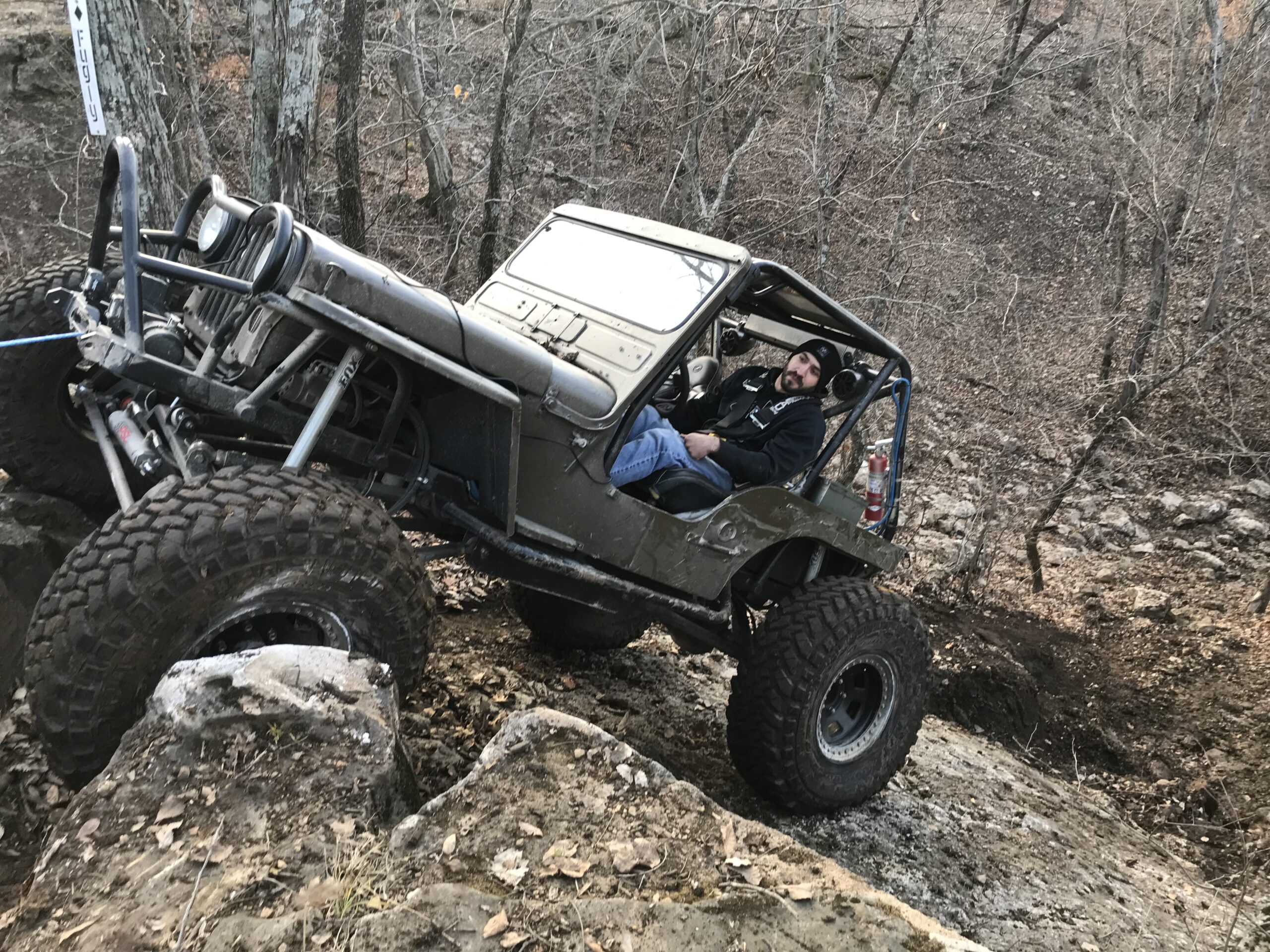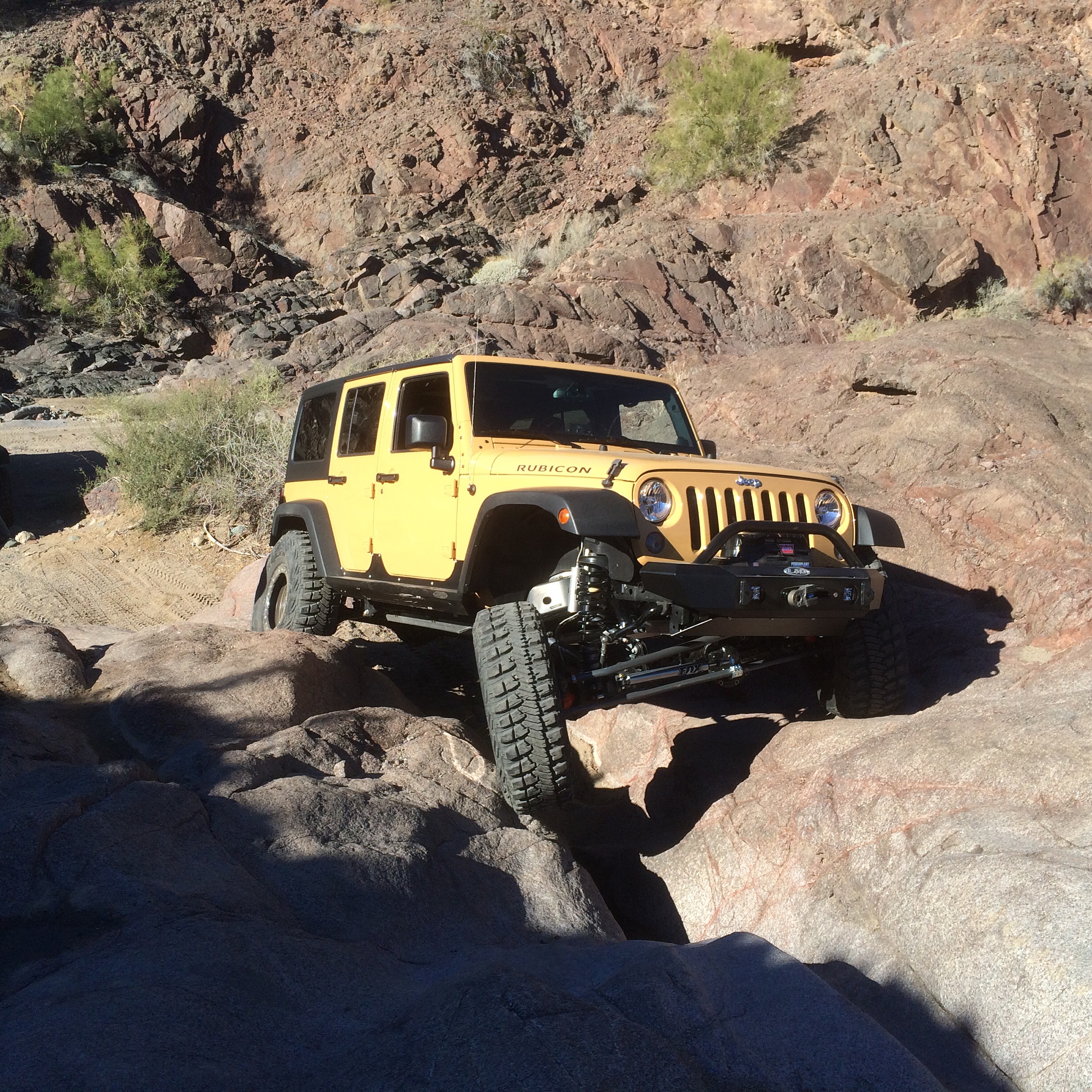When this 1984 Jeep CJ7 became available, we jumped on the opportunity to rehabilitate a Jeep with so much potential. Forty years old this year, this red CJ is a classic that will soon be called an antique. These Jeeps are increasingly rare to find in good condition. Most have rusted out tubs or chassis. We were lucky to find this one in great shape. Although it’s showing its age with some paint fade and patina, the tub has zero rust. It has enough of its original roots to make this a classic restoration project. Or, it can be customized into a hard-core rock crawler.
Since its introduction, the Jeep CJ has long been a favorite off-road vehicle for the all-American past time of fun in the outdoors and top-down driving. CJ’s, short for “Civilian Jeeps”, are direct descendants of the 1940’s era military Jeeps whose rugged capabilities were proven during World War II. Built in 1984 when things were still being built to last, this CJ7 had some handling and size improvements over its CJ5 predecessor. These changes caused buyers to abandon the CJ5 for the newer model, despite the older Jeep being in production for three decades.
The CJ7 featured a 10-inch longer wheelbase and longer squared-off doors. Hard or soft doors were an option at the dealer, as were hard or soft tops. The extra length gave the CJ7 the option of being a 4-passenger vehicle without sacrificing its trail abilities. Many buyers began customizing them for better off-road performance almost immediately. As a result, AMC was able to double their sales during its 11-year manufacturing run.
This 1984 Jeep CJ7 has its original factory 4.2L inline 6 AMC engine, an option buyers had at the time over a 2.5L 4-cylinder motor. Also not standard in 1984, were the black hard top and doors. Buyers could choose between no top which was the standard or pay for optional soft or hard tops. It also has its original Dana 300 transfer case, a 3.31 gear ratio and Dana 30 front axle.
At some point over the years, this Jeep got an upgraded rear one-piece Alloy USA axle shaft. This replaced the problematic two-piece factory AMC 20 narrow track. It also has upgraded leaf springs, aftermarket twin sticks, a four-inch lift, 33-inch tires and a paint job. Originally “Sebring red”, the paint did what red paint does in the Southern California desert – it turned pink. This same environment that prompted a re-paint is likely the same dry environment that saved the Jeep from rust.
On our first test drive, it’s engine fired right up with no issues. It didn’t want to stay running however. We quickly figured out that it had a fuel issue keeping gas from getting to the motor. We put a bottle of fuel under the hood as a temporary fix. To fix it permanently, we dropped the gas tank and dumped the old fuel. We put in new fuel lines, a new fuel strainer, and fresh fuel.
The interior was pretty dirty so we took the seats out and started cleaning it up and then took it for another test drive now that the fuel system was fixed. We found some misfiring going on, so it was time for a tune-up. The spark plugs were pretty gummed up. Next, we gave it a new cap and rotor, spark plugs, and a new fuel filter. We also replaced all the engine, transmission, differential and brake fluids.
A third test drive indicated that both front calipers were locking up, getting hot, and smoking. This problem required new calipers, a new master cylinder and the brakes to be bled. It was when we took the rear wheels off to bleed the brakes that we found the upgraded rear shafts where Alloy USA, which replaces the original problematic two piece.
After yet another test drive, we found the carburetor was leaking a lot of fuel on the accelerator pump. It was an aftermarket 2150 carburetor which was missing the choke and some linkage. At first we decided to buy a cheap replacement which was a mistake. The new one didn’t want to idle right and none of the adjustments worked like they should, so we took that back out and decided to rebuild the original carb that was on it.
The leaf springs that came on the Jeep where a bit bent and seemed to lean some, plus they were way too long for the vehicle. We replaced them with new leaf springs, shackles and bushings from Mountain Offroad. We also upgraded the wheels and tires to Pro Comp wheels and Mickey Thompson Baja Boss tires.
Next, we replaced some old tie rod ends and then took it for a drive. We found it drove much better and smoother, so we took to removing the old winch it had on it that was completely seized up. The winch plate was welded on so it actually had to be cut off. We cleaned and painted the underlying bumper as well.
We cleaned 40 years of grime, dirt, oil and grease from the frame and repainted it and we found no rust when doing so. Then we cleaned up under the hood, changed the coolant, and polished up the paint with some rubbing compound. The seatbelts were pretty old and not at all safe so we installed som new Corbeau belts and polished up all the interior vinyl.


